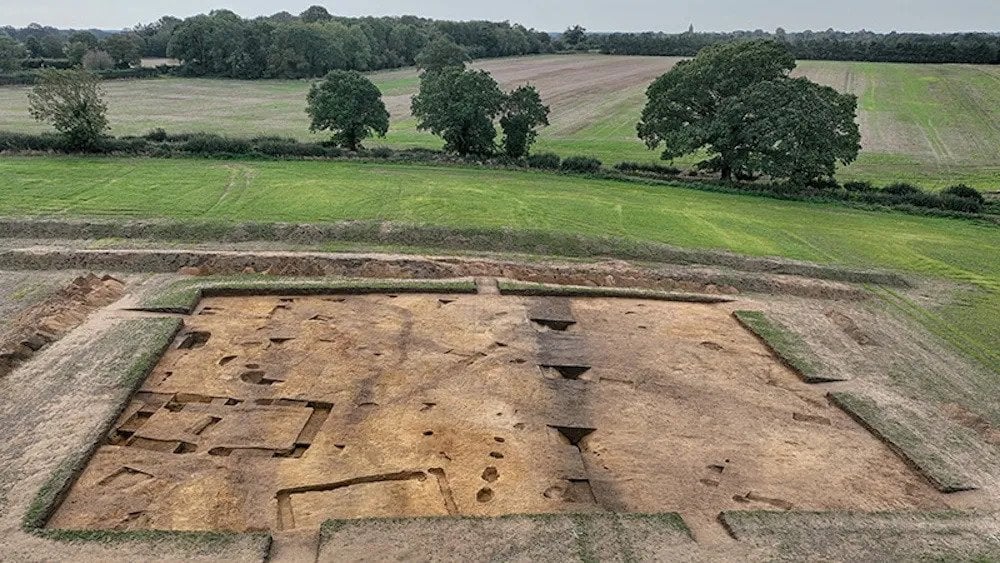
Archaeologists in England, have found ancient remains that might be from a pagan temple or a cult house. These remnants are about 1,400 years old and were discovered at Sutton Hoo, a big burial area in Suffolk, eastern England.
The place has a rich history dating back to the seventh century. Since it was first found in 1939, experts have been making new discoveries, like 18 burial mounds and an old Anglo-Saxon ship.
Over 200 volunteers, including schoolchildren, teamed up with archaeologists to dig up the base of the temple and two other wooden structures around it. The whole area of the compound was probably 37 acres (15 hectares), as mentioned in a statement from Suffolk Heritage Explorer, a blog by Suffolk County Council.
Royal compound may have been overseen by King Raedwald
Archaeologists believe that King Raedwald, the ruler of the East Angles, might have managed the royal compound. He switched to Christianity and passed away around 627. Moreover, it’s believed that he’s buried at Sutton Hoo.
Autumn landscapes at Sutton Hoo, Suffolk, site of 18 ancient burial mounds including the world famous Anglo-Saxon Ship Burial of King Rædwald @NT_SuttonHoo pic.twitter.com/ZvJ2xCNWHo
— Charles Cuthbert (@CRCuthbert) November 8, 2021
“Its distinctive and substantial foundations indicate that one of the buildings was unusually high and robustly built for its size, so perhaps it was constructed for a special purpose,” Christopher Scull, an honorary visiting professor at Cardiff University in Wales who led the excavations, told BBC News. “It is most similar to buildings elsewhere in England that are seen as temples or cult houses, therefore it may have been used for pre-Christian worship by the early Kings of the East Angles.”
In the 8th-century book “The Ecclesiastical History of the English People,” the Venerable Bede, an English monk and scholar, talked about a “king’s village” in “Rendleaesham” (now Rendlesham, a village in Suffolk).
He described a temple there with altars devoted to gods before Christianity.
Fired clay mold used for casting horse harnesses
The compound, described by Scull as “remarkable,” had a nearly 1-mile-long ditch around it. It was a piece of a much bigger settlement complex, covering 124 acres (50 hectares), as mentioned in the statement.
Volunteers also discovered a clay mold used for making horse harnesses and getting rid of waste products, showing evidence of seventh-century metalworking. Additionally, two graves were found.
“The results of excavations at Rendlesham speak vividly of the power and wealth of the East Anglian kings, and the sophistication of the society they ruled,” Shull told BBC News. “The possible temple, or cult house, provides rare and remarkable evidence for the practice at a royal site of the pre-Christian beliefs that underpinned early English society.”
See all the latest news from Greece and the world at Greekreporter.com. Contact our newsroom to report an update or send your story, photos and videos. Follow GR on Google News and subscribe here to our daily email!



